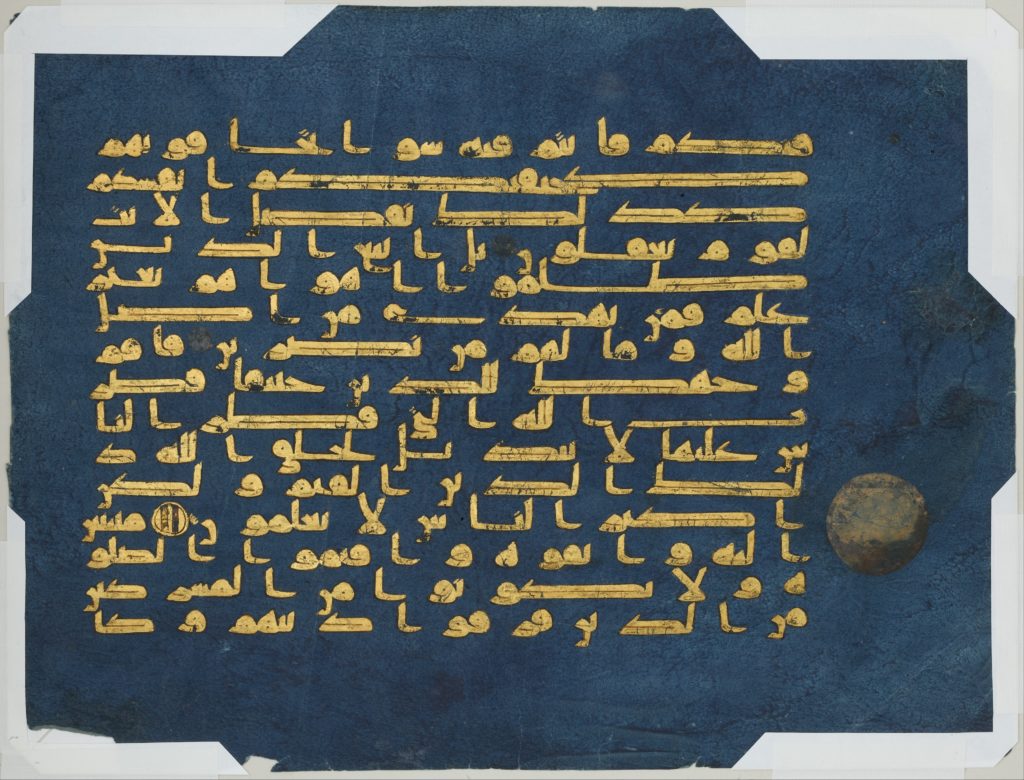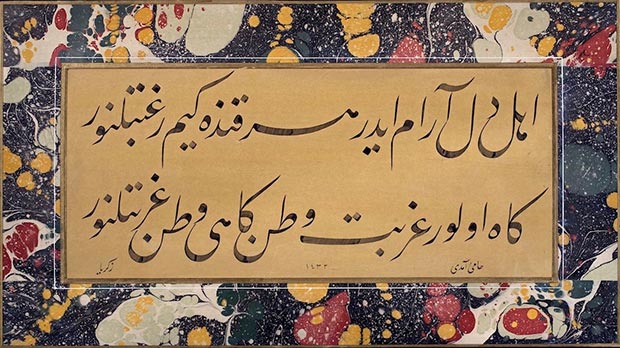Tools and Materials
The materials listed below have been used for centuries to write Arabic script calligraphy. Though other options exist, a reed pen, carbon-based ink and coated paper are the primary tools needed to write good calligraphy.
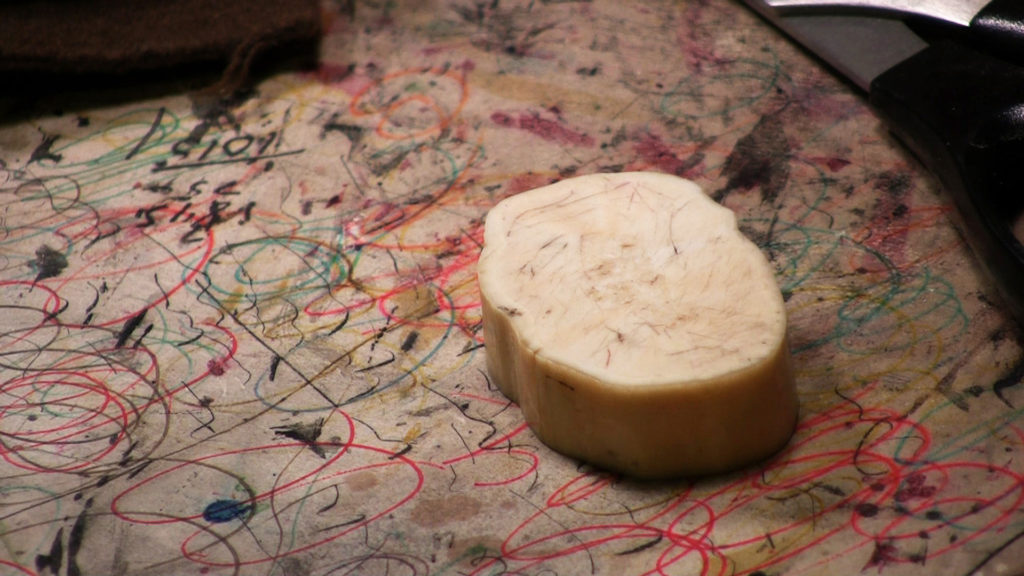
Tools used for Arabic script calligraphy
Pen
A reed pen, or “qalam” in Arabic, is the traditional instrument used for writing calligraphy. This is preferred over a pen with a metal tip, because the flexibility of the natural material allows for a greater range of motion while writing.
Reeds are grown in swamps and shallow waters. Once a reed is harvested, it is seasoned by burying it in horse manure, chosen because it maintains a constant temperature. This process typically takes four years, during which time the reed hardens and darkens.
Next, you cut the reed so the size and angle of its tip are appropriate for the script you intend to write. The tip is carved with a penknife, and trimmed at an angle on a “makta,” a small cutting board made specifically for this purpose. The pen is then slit down the middle, allowing it to hold about one letter’s worth of ink.
The reed pen is sometimes substituted with:
- a bamboo pen
- a Javanese pen made from the thorn of a palm tree (for detailed work)
- a carved wooden pen (for large work)
- a felt-tip pen with a slanted tip, such as a Sharpie chisel tip
Calligraphy is a spiritual geometry—manifested by a material tool. If you shape your pen well, you will do your calligraphy well. But if you neglect your pen, you will have neglected your calligraphy.
Yaqut al-Musta‘simi
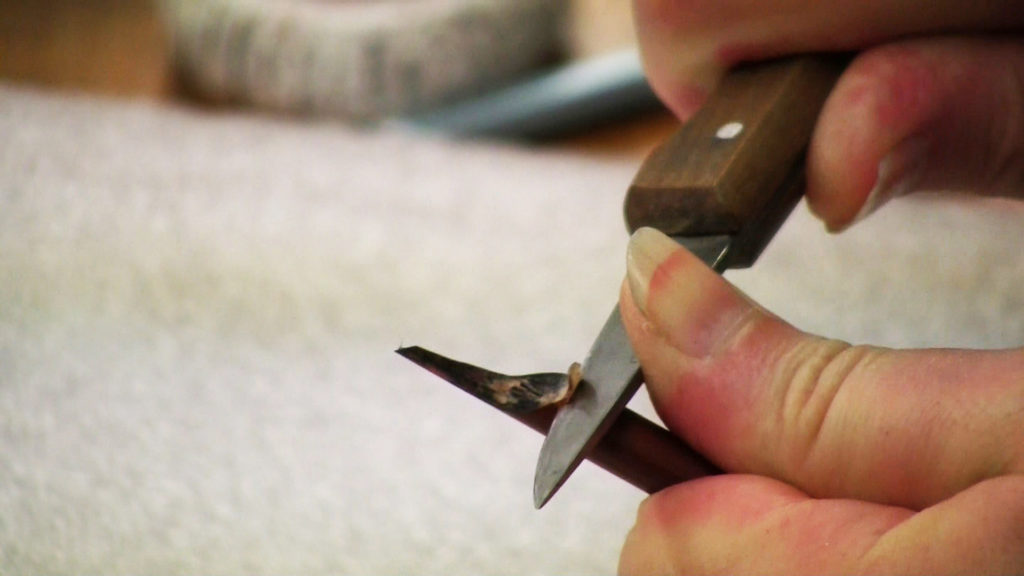
Ink
Calligraphy is typically written with black ink made from soot, dissolved gum arabic and water. This ink is water-soluble, and mistakes can be easily removed from the paper with a wet cloth. In the past, the soot used was scraped from inside mosque lamps, thus imparting a spiritual blessing to the writing.
The ink is placed in a small waterproof inkwell, along with a wad of raw silk fibers. You pour enough ink into the jar to be absorbed by the fibers, but no more. The pen lifts the ink from this wad of fibers. This keeps it from acquiring too much ink and, thus, creating unsightly blobs when writing.
Various inks are used for important manuscripts. A Qur’an, for example, may be written in several colors of inks, including gold. In the past all sorts of inks were developed, from invisible ink for writing secret messages to ink containing ground glass that sparkled when dry.
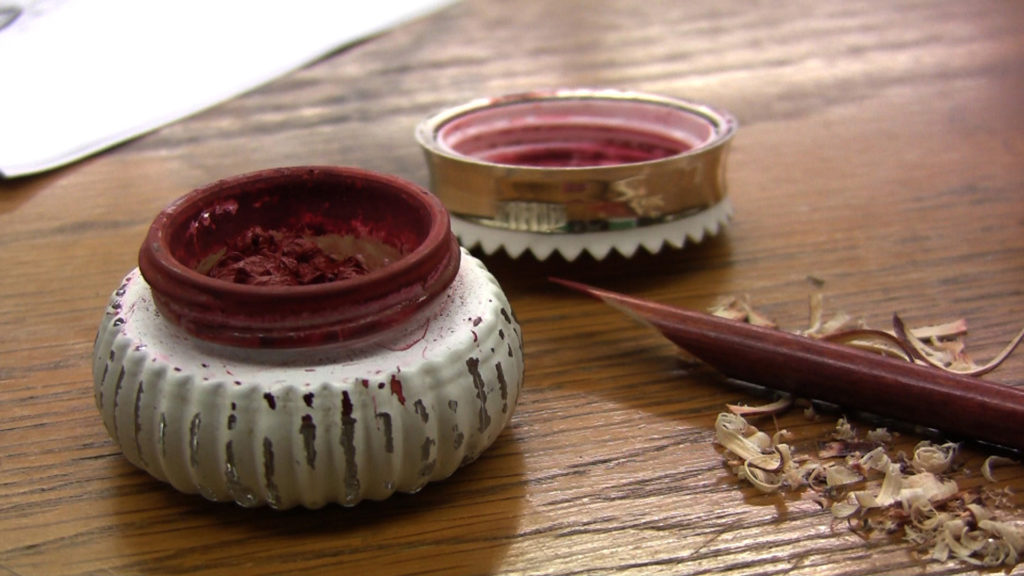
Paper
Until the 10th century, calligraphy was written on papyrus (made from fresh-water reeds) or parchment (made from the skin of an animal). In the 10th century, paper was introduced in the Middle East. It gradually replaced papyrus and parchment because it was cheaper and easier to produce.
Before a piece of paper is used for calligraphy, it is usually dyed (often by the calligrapher), then coated with a starch mixture known as ahar. It is then burnished with a tool that gives it a smooth finish. This smooth, less absorbent surface means that mistakes can easily be lifted from the paper. Today, many calligraphers also use commercially-produced coated papers.
Paper used for calligraphy is usually cream or tan, because white paper tires the eyes over time. Papers of other colors (such as blue, yellow or green) were used for special manuscripts like the Qur’an. Dyes for paper are made from the following:
- Tea
- Onion skins
- Walnut skins
- Saffron
- Turmeric
- Safflower
- Lac (a type of insect found in Southeast Asia)
- Sapanwood (a woody plant)
- Henna
- Pomegranate bark
- Indigo
- Verdigris (copper carbonate)
- Orpiment (a sulfuric mineral)
- Ceruse (a compound including white lead)
- Blue vitriol (copper sulfate)
Paper could also be sprinkled with gold, or marbled (the art of ebru). Sometimes a calligraphy composition was cut out letter-by-letter and pasted onto a background of a contrasting color, thus forming a collage.
